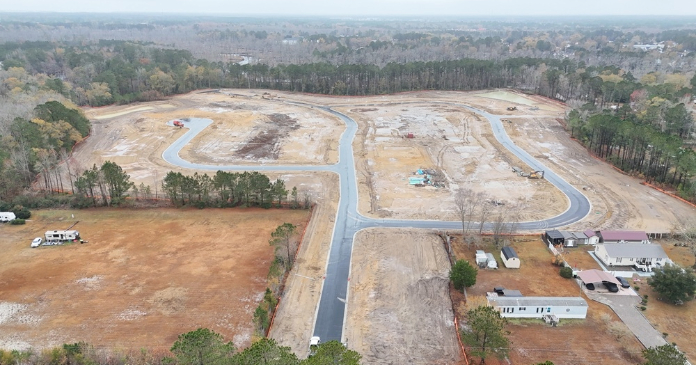The 2007 report was riddled with errors about Himalayan glaciers, the Amazon rain forest, African agriculture, water shortages and other matters, all of which erred in the direction of alarm. This led to a critical appraisal of the report-writing process from a council of national science academies, some of whose recommendations were simply ignored.
Others, however, hit home. According to leaks, this time the full report is much more cautious and vague about worsening cyclones, changes in rainfall, climate-change refugees, and the overall cost of global warming.
It puts the overall cost at less than 2 percent of GDP for a 4.5 degrees Fahrenheit temperature increase during this century. This is vastly less than the much heralded prediction of Lord Stern, who said climate change would cost 5 percent-20 percent of world GDP in his influential 2006 report for the British government.
The forthcoming report apparently admits that climate change has extinguished no species so far and expresses “very little confidence” that it will do so. There is new emphasis that climate change is not the only environmental problem that matters and on adapting to it rather than preventing it. Yet the report still assumes 70 percent more warming by the last decades of this century than the best science now suggests. This is because of an overreliance on models rather than on data.
The IPCC’s September 2013 report abandoned any attempt to estimate the most likely “sensitivity” of the climate to a doubling of atmospheric carbon dioxide. The explanation, buried in a technical summary not published until January, is that “estimates derived from observed climate change tend to best fit the observed surface and ocean warming for sensitivity values in the lower part of the likely range.” Translation: The data suggest we probably face less warming than the models indicate, but we would rather not say so.
The Global Warming Policy Foundation, a London think tank, published a careful survey of all the reliable studies of sensitivity. The authors are British climate scientist Nic Lewis and the Dutch science writer Marcel Crok. They say the IPCC’s September report “buried good news about global warming,” and that “the best observational evidence indicates our climate is considerably less sensitive to greenhouse gases than climate scientists had previously thought.”
Lewis and Crok argue that the average of the best observationally based studies shows the amount of immediate warming to be expected if carbon dioxide levels double after 70 years is “likely” to be between 34 and 36 degrees F. That’s much lower than the IPCC assumes in its forthcoming report.
In short, the warming we experienced over the past 35 years is likely to continue at about the same rate: a little over a degree a century.
Briefly during the 1990s there did seem to be warming that went as fast as the models wanted. But for the past 15-17 years there has been essentially no net warming (a “hiatus” now conceded by the IPCC), a fact that the models did not predict and now struggle to explain. The favorite post-hoc explanation is that because of natural variability in ocean currents more heat has been slipping into the ocean since 2000—although the evidence for this is far from conclusive.
None of this contradicts basic physics. Doubling carbon dioxide cannot on its own generate more than about 2 F of warming, however long it takes. All the putative warming above that level would come from amplifying factors, chiefly related to water vapor and clouds. The net effect of these factors is the subject of contentious debate.
In climate science, the real debate has never been between “deniers” and the rest, but between “lukewarmers,” who think man-made climate change is real but fairly harmless, and those who think the future is alarming. Scientists like Judith Curry of the Georgia Institute of Technology and Richard Lindzen of MIT have moved steadily toward lukewarm views in recent years.
Even with its too-high, too-fast assumptions, the recently-leaked draft of the IPCC report makes clear that when it comes to the effect on human welfare, “for most economic sectors, the impact of climate change will be small relative to the impacts of other drivers,” such as economic growth and technology, for the rest of this century. If temperatures change by about 1C degrees between now and 2090, as Lewis calculates, then the effects will be even smaller.
Indeed, a small amount of warming spread over a long period will, most experts think, bring net improvements to human welfare. Studies such as by the IPCC author and economist Professor Richard Tol of Sussex University in Britain show that global warming has probably done so already. People can adapt to such change—which essentially means capture the benefits but minimize the harm. Satellites have recorded a roughly 14 percent increase in greenery on the planet over the past 30 years, in all types of ecosystems, partly as a result of man-made CO2 emissions, which enable plants to grow faster and use less water.
There remains a risk that the latest science is wrong and rapid warming will occur with disastrous consequences. And if renewable energy had proved by now to be cheap, clean and thrifty in its use of land, then we would be right to address that small risk of a large catastrophe by rushing to replace fossil fuels with first-generation wind, solar and bioenergy. But since these forms of energy have proved expensive, environmentally- damaging and land-hungry, it appears that in our efforts to combat warming we may have been taking the economic equivalent of chemotherapy for a cold.
Almost every global environmental scare of the past half century proved exaggerated including the population “bomb,” pesticides, acid rain, the ozone hole, falling sperm counts, genetically engineered crops and killer bees. In every case, institutional scientists gained a lot of funding from the scare and then quietly converged on the view that the problem was much more moderate than the extreme voices had argued. Global warming is no different.
Author: Matt Ridley
















